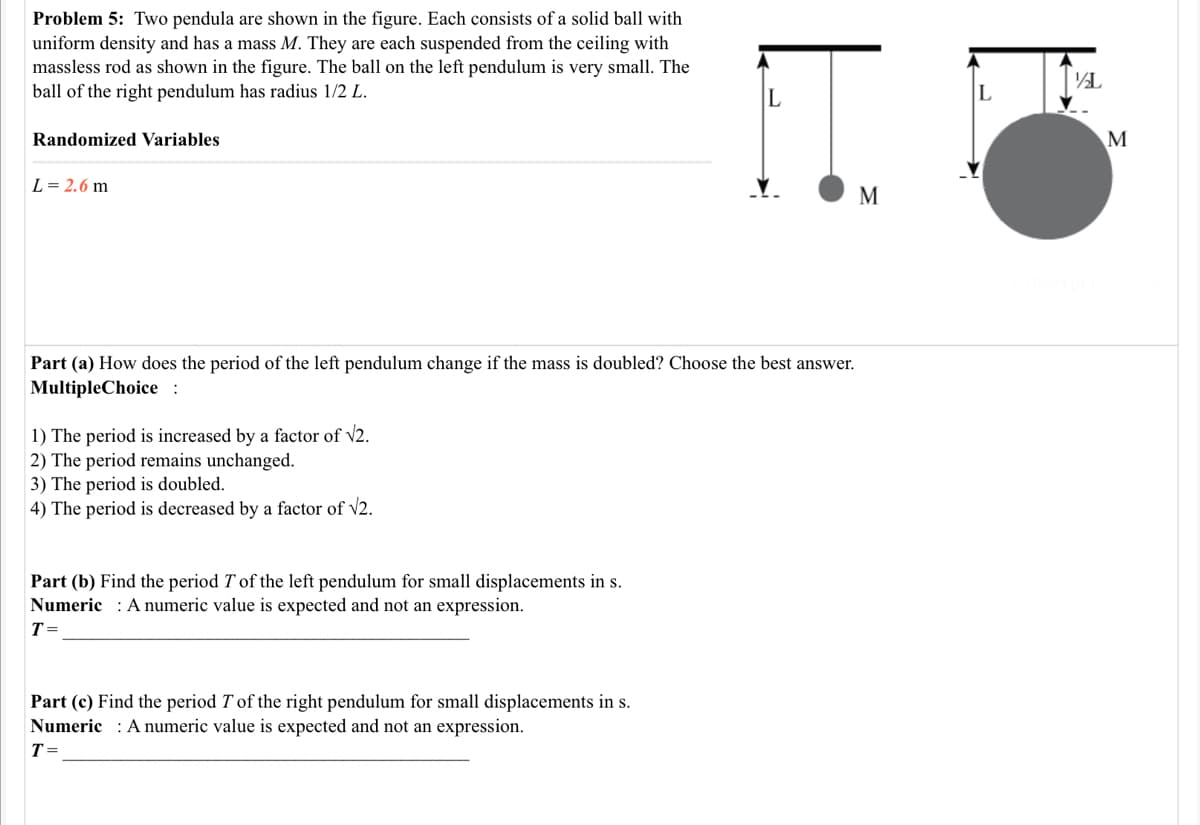Problem 5: Two pendula are shown in the figure. Each consists of a solid ball with uniform density and has a mass M. They are each suspended from the ceiling with massless rod as shown in the figure. The ball on the left pendulum is very small. The ball of the right pendulum has radius 1/2 L. L Randomized Variables L= 2.6 m M Part (a) How does the period of the left pendulum change if the mass is doubled? Choose the best answer. MultipleChoice : 1) The period is increased by a factor of v2. 2) The period remains unchanged. 3) The period is doubled. 4) The period is decreased by a factor of v2. Part (b) Find the period T of the left pendulum for small displacements in s. Numeric : A numeric value is expected and not an expression. T = Part (c) Find the period T of the right pendulum for small displacements in s. Numeric : A numeric value is expected and not an expression. T=
Simple harmonic motion
Simple harmonic motion is a type of periodic motion in which an object undergoes oscillatory motion. The restoring force exerted by the object exhibiting SHM is proportional to the displacement from the equilibrium position. The force is directed towards the mean position. We see many examples of SHM around us, common ones are the motion of a pendulum, spring and vibration of strings in musical instruments, and so on.
Simple Pendulum
A simple pendulum comprises a heavy mass (called bob) attached to one end of the weightless and flexible string.
Oscillation
In Physics, oscillation means a repetitive motion that happens in a variation with respect to time. There is usually a central value, where the object would be at rest. Additionally, there are two or more positions between which the repetitive motion takes place. In mathematics, oscillations can also be described as vibrations. The most common examples of oscillation that is seen in daily lives include the alternating current (AC) or the motion of a moving pendulum.

Trending now
This is a popular solution!
Step by step
Solved in 2 steps with 2 images


